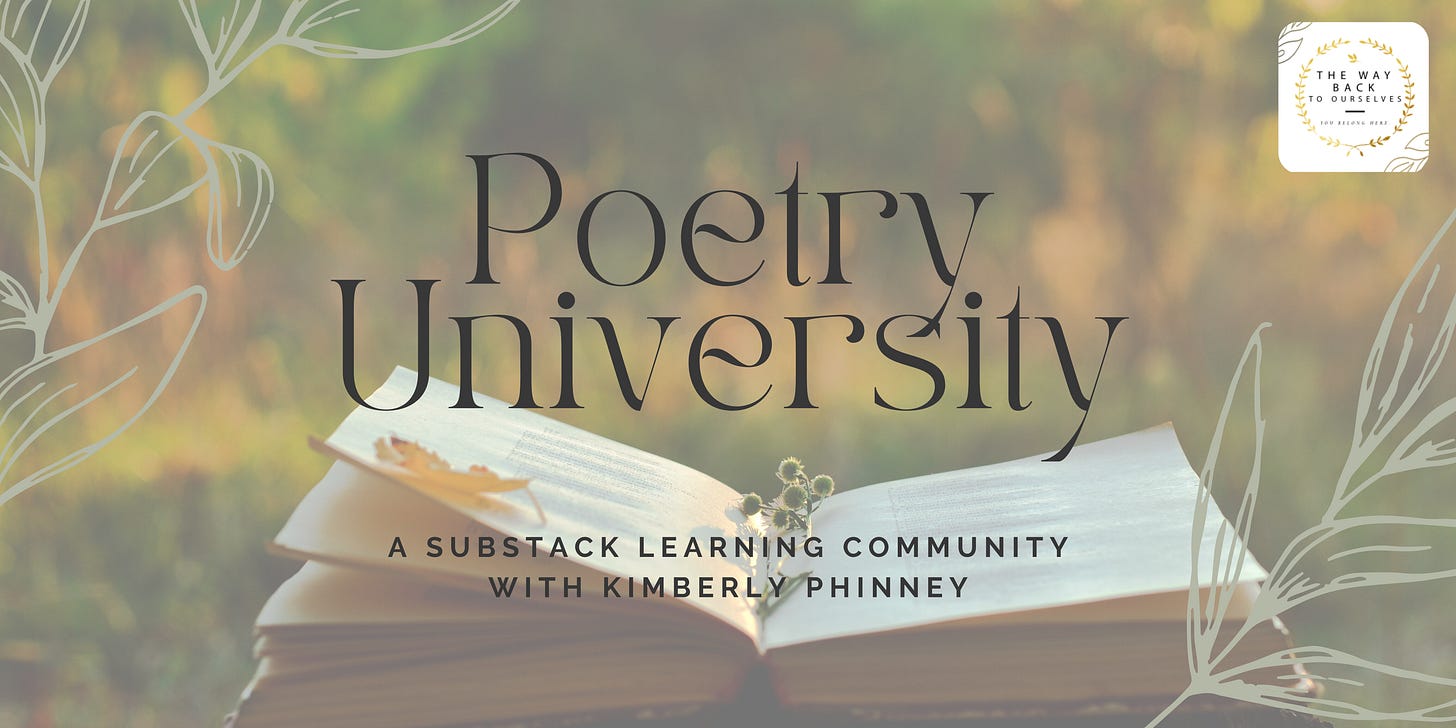The Poet's Manifesto: Don't Just Write Like a Poet, Learn to Live Like One, Too
What My Monkish Life Has Taught Me as a Writer, Contemplative, and Professor
I. The Poet’s Manifesto: One Part Craft, One Part Soul
“Poetry is when an emotion has found its thought, and the thought has found words.” —Robert Frost
Poetry is more than craft. It’s not just about what makes it to the page in the shape of vowels and consonants, which form words, then lines, then meaning in a melodious way. Rather, it’s about what’s on the inside of the poet—what the poet contemplates, loves, sees, and imagines—that shapes their heart and mind, which in turn sends their pen to the page as an act of translation.
More simply put, poetry is a way of being.
Our ability to attune to the world around us and its exquisite beauties and then organize them in a just-right way on the page is akin to a tuning fork as it works to orchestrate the accompanying instruments’ perfect tone and pitch.
So, poetry brings the Divine into focus.
It is an act of excavation, or distillation, as it gives language to the mysteries of the human experience and the often-esoteric rhythms of the spiritual and natural world.

For years, as an English and creative writing teacher turned English professor and editor, I have been asked this question most: “How can I become a better poet?”
Undoubtedly, there are many outstanding books on the craft of poetry and writers’ manuals on the fundamentals of style1. But in this veritable treasure trove, I have noticed something lacking: there are far fewer books on the deep interiors of what makes a poet’s soul.
As a serious poet and writer myself, who is also a perpetual student, I am deeply curious about what makes a writer a writer and a poet a poet, and I would love to find more books that comment on a poet’s way of being in the world beyond their actual poetry2.
I want to delve into their abstract worlds and hidden spiritual practices. I want to learn to make them tangible in an authentic way for myself. I want to learn to see what they see.
Of course, there are fine books that touch on the writer’s life, like Anne Lamott’s Bird by Bird, Stephen King’s On Writing, and Ray Bradbury’s Zen in the Art of Writing. However, these are geared more toward fiction writing versus the poet’s soul, which is, indeed, different.
II. The Poet’s Manifesto: The Beginning of an Idea
Obviously, I have very little to offer when compared to these greats, but it did get me thinking about how this poet exists in the world (as in me). And if I were to write a book on the poet’s soul, what would be in it? How do I see the world? What are my sensibilities? What are my perceptions? What are my hidden rules? Where do my poems come from? How do they get to the page?
Essentially, I wondered, “What is my poet’s manifesto?”
So, as I worked through this idea between my ears over the past few weeks, I determined it would make for a good thought experiment for myself and you, too, dear reader. Here are a few reasons why:
I would like to have more clarity about my own poet’s soul for self-awareness and personal growth.
I’d also like to use this sort of metacognition to help other poets find their way when I am asked that inevitable question, “How can I become a better poet?”
And finally, I thought maybe it would inspire you to create your own “Poet’s Manifesto.” (And if you’re not a poet, no worries! This can be the “Writer’s Manifesto” or the “Creatives Manifesto,” too3)
So, here’s what I have so far, which is my first three lessons of the ten that I have developed. There will also be corresponding creative prompts and next steps with these lessons, but that will all be provided to our nearly 50 paid subscribers throughout POETRY UNIVERSITY, along with all the other lessons that I develop on this journey. If you are interested in taking this journey with me and other fabulous poets and writers, you can become a paid subscriber below. Our first meeting is May 27, at 8:30 pm EST, on Zoom (live and recorded).
III. THE POET’S MANIFESTO: How to Write Like a Poet and Live Like One, Too (PART 1)
LESSON #1: Curiosity Over Certainty
Keep reading with a 7-day free trial
Subscribe to My Way Back to keep reading this post and get 7 days of free access to the full post archives.






